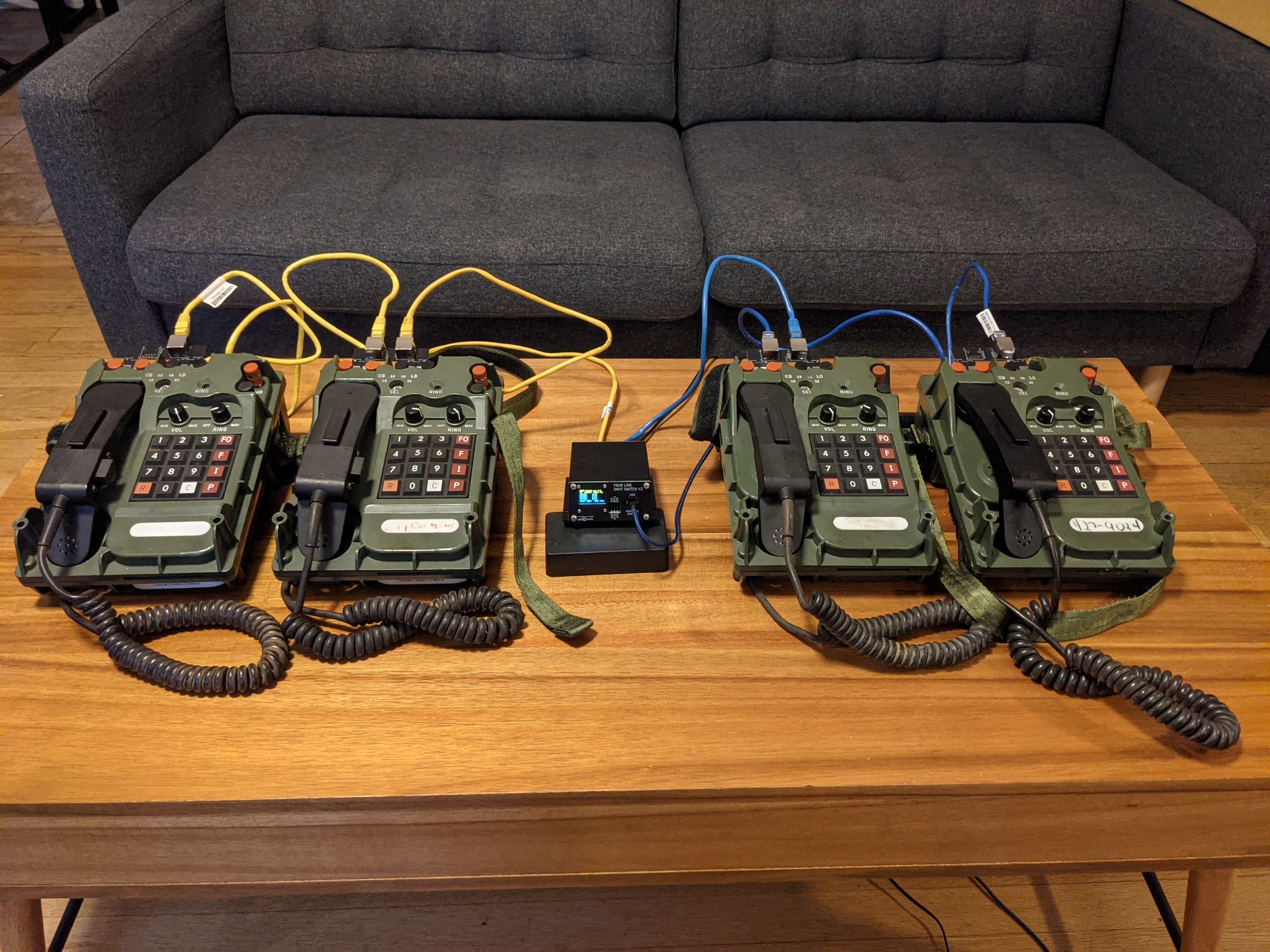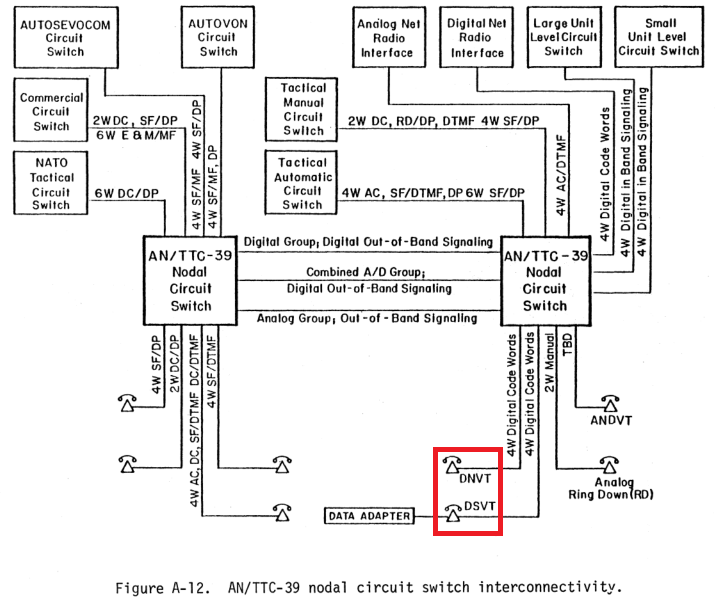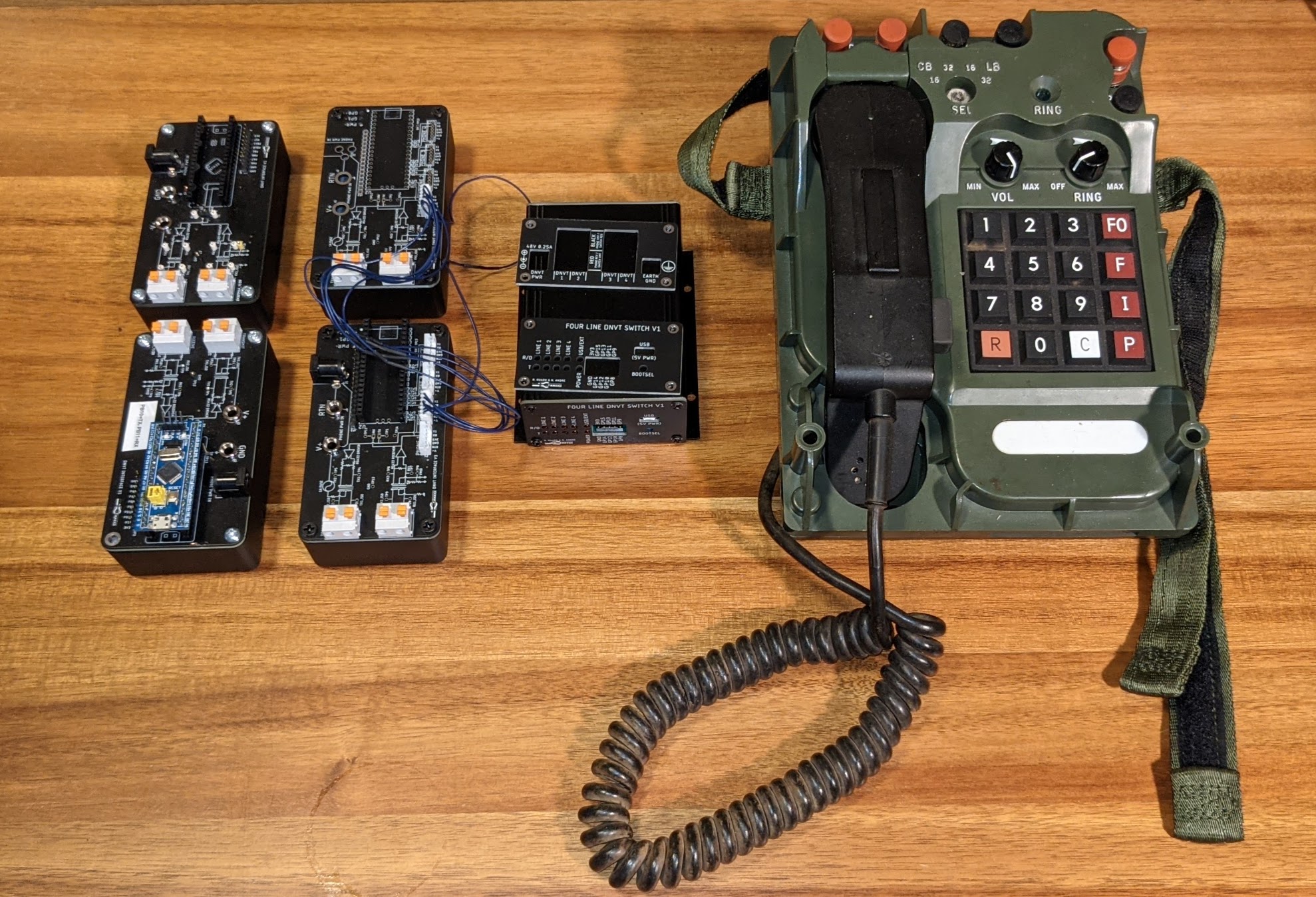Reverse Engineering Digital Non-secure Voice Terminals
2023
This is the most complex and most time consuming personal project that I have worked on to date. Instead of throwing all of this on a single 10,000 word page, I have split the write up into a few separate sections:
- DNVT Teardown and Interface Schematic
- Custom Interface Circuit and Power
- Control Codewords and State Diagram
- Continuously Variable Slope Delta Modulation Decoding and Encoding
- Initial DNVT Interface Test Boards
- Four Phone DNVT Switch Design
Background
For an awkward period between the era of analog telephones and VOIP telephony, digital field telephones connected by twisted pair wires carrying unframed differential Manchester encoded CVSD (Continuously Variable Slope Delta) modulated audio found use with the US military and NATO allies. These are DNVTs (Digital Non-secure Voice Terminals).

Final Switch Connected to Four TA-1042 DNVTs
The encrypted digital phones from the same era are called DSVTs (Digital Subscriber Voice Terminals), and they look similar to DNVTs — just chonkier. The secure phones operate at the same line rates (16 or 32 kHz) as the non-secure phones, so it is likely that the secure phones effectively just encrypt the bitstream generated by the circuitry in the non-secure phones. These phones were part of the broader TRI-TAC (Tri-Service Tactical Communications) system, but that is beyond the scope of this article. DNVTs were originally used with AN/TTC-39 circuit switches which are 7x7x11' truck mounted shelters that require an external air conditioner transported on a separate pallet. Apparently these switches were also somewhat poorly designed. The aim of this project is to build a switch that allows dialing between DNVTs and which allows the DNVTs to interface with a modern VOIP system.

AN/TTC-39 Switch Interconnectivity from NTIA Report 83-123
Prior to this project, there has been no way that I am ware of to use TA-1042 phones for anything other than local battery powered point to point links.
Overview
I've always through that field telephones are neat. One of my first electronics projects was re-wiring rotary dial phones to automatically ring each other when one was lifted off-hook. In college, I came across the TA-1042A/U digital non-secure voice terminal field telephone on eBay. I was struck by its industrial design and intrigued by the possibility of reverse engineering an interface with one. I downloaded an IEEE paper describing the operation of these phones while on campus (to avoid the $33 non-member fee), and filed it away for another day when I had time and the spare cash to buy a couple $100 phones that were nominally paper weights without significant design work.

DNVT Interface Prototypes Leading Up to Final Switch
In July 2022, these phones happened to come up in a conversation with my friend Nick Andre who was also interested in trying to get these phones working with a modern system. I bought one on eBay and set to work. I first figured out how to physically interface with the phones and then built a custom circuit board to interface the phones with an STM32F103 microcontroller running crappy Arduino code to encode and decode data in Differential Manchester Encoding. From there, I figured out the in-band control codes used to control the state of the phones and the sequencing of these codes needed to transition the phone through its various states. Nick then stepped in and implemented a switch on a Raspberry Pi Pico based on these findings. Serendipitously, the Raspberry Pi Pico's RP2040 microcontroller contains PIO (programmable input output) blocks capable of easily decoding differential Manchester code. After all of this was sorted out with single-line test boards, I designed a four-line switch board. The first version of this board has LEDs to indicate line status, but Nick had the great suggestion of instead using a cheap OLED screen, so I built a second version of the switch that then say a few iterations to use different connectors and to use through-hole packaged transformers for ease of assembly by novices.

Final V2 DNVT Switch